Everyone knows the night time is scary. Any matter of danger lurks, undetected, in the dark.
A couple of years ago, a soft wheeeel gained in decibels near where I was enjoying the summer night; the screeched word slowly growing to a piercing squeal before settling into a puc, puc, p’weeEER. Frightening, it was, leaving me to flee back to the safety of the house.
Later, describing each syllable and inflection of that scary incident to a learned birder-acquaintance, I learned that I had a common pauraque in the back yard somewhere near the wetlands adjacent to the resaca.
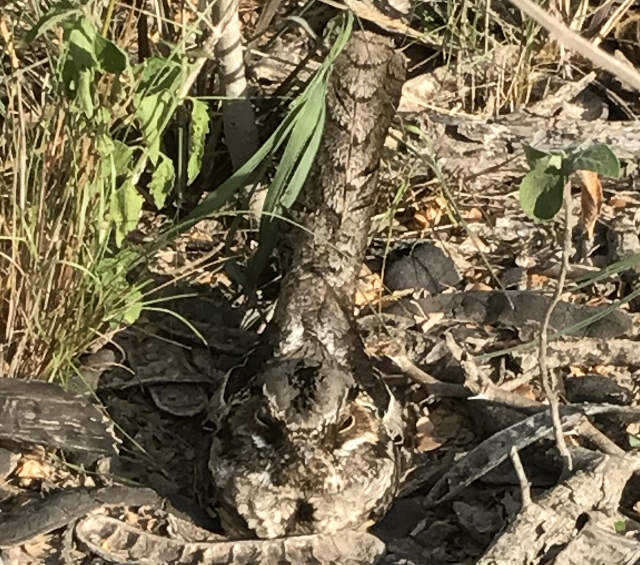
If you’ve been following this blog, you may recall that I’ve set up a blacklight and moth sheet many nights since the April City Nature Challenge bioblitz. I turn the blacklights on at dusk and leave them on until I get up in the mornings before first light. And that’s literally — in the dark of the night.
The distant, quiet chortle of the common pauraque breaking the dark silence from the corn field next to our property is now more a comfort than a caution. If it’s calling, danger is not close by, right?
The cicada clatter during August and September was more than comforting — for as long as they sounded their deafening racket, all was safe. Only when the commotion was sharply cut off was it worrisome — it could only mean something intent on harm was prowling nearby.
And of course, dog barks get my attention. The louder the barking, the quicker I finish photographing moths on the sheet and scurry to the house.
Photographing and identifying the moths and bugs that have been coming to the moth sheet have been fun and interesting. I’ve been amazed at what goes on in the secret of the night in the insect world.
What elicits a squeal from me from time to time and causes me to quickly jump back is when the big green katydids eject off the sheet and land on my shoulder.
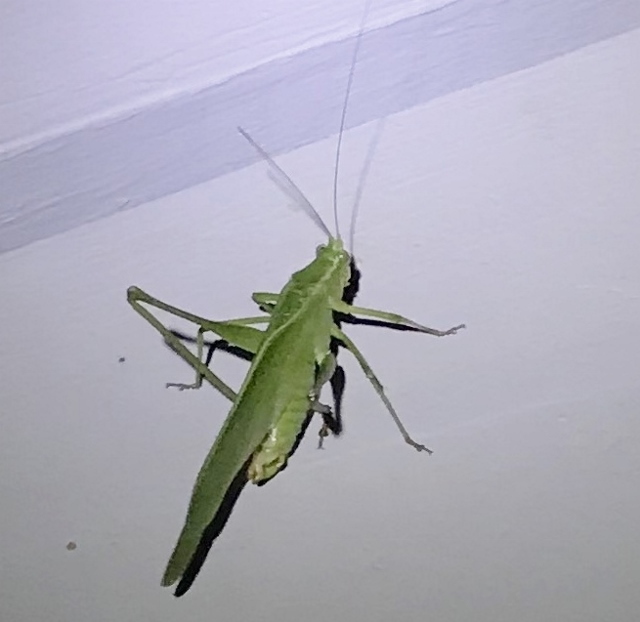
Or the big green stink bugs the size of a quarter (Loxa viridis) appear to want to leap at my face.
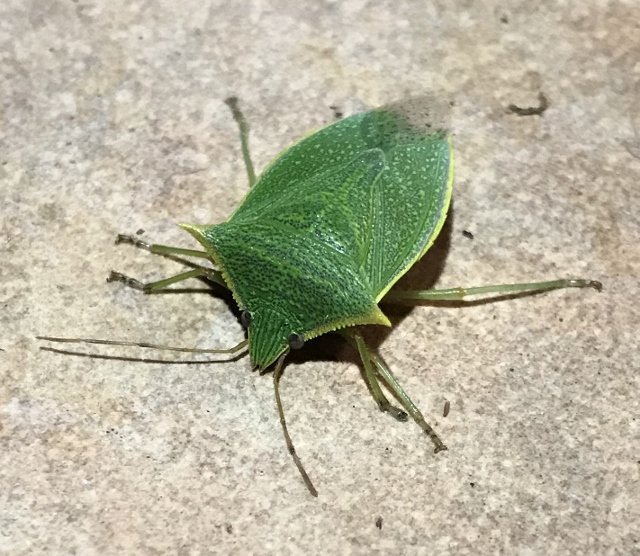
Then there are the disconcertingly giant mosquitoes that look like dastardly disease carriers, but are not, like the Psorophora cyanescens — not currently known to carry diseases, which is somewhat of a relief.
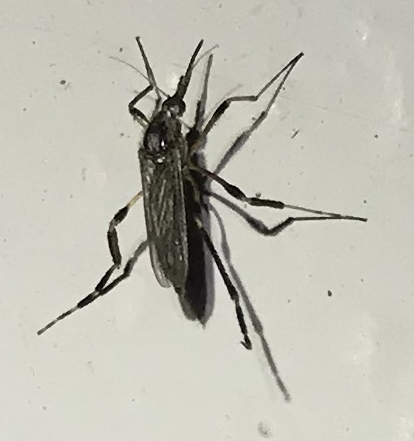
And then there’s the Texas bow-legged bug (Hyalymenus tarsatus) that swaggers toward an invisible tiny horse intent on riding off into the sunrise.
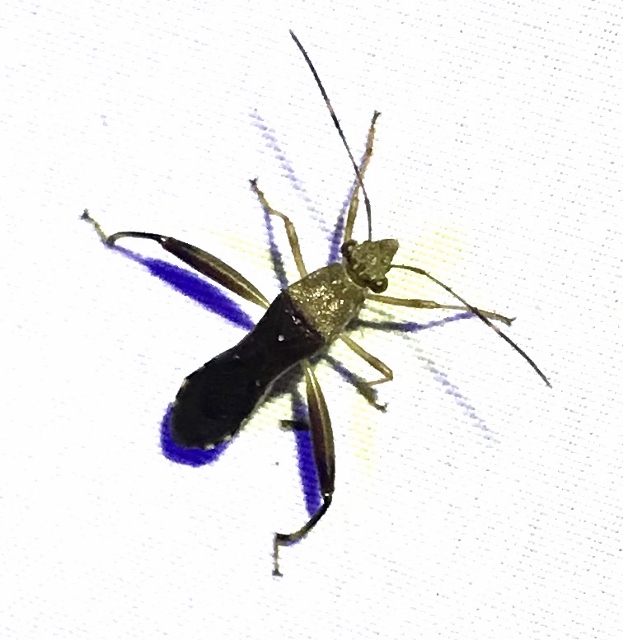
Along with all those harrowing bug events, not too long ago in the early morning stillness, two large-winged creatures flew overhead and landed in the top of the tallest tree on the property, perfectly in my view. They were silhouetted against the light of the moon and began softly talking: who, who — whoo-whoo-whoo. I was too much in awe to be scared. Ok, I thought. Owls. I described the call to a friend — whose cell phone ring is that of a great horned owl. I couldn’t imagine two such critters would be on our property. I’ve had evidence that our palms house a barn owl or two, but I’d always thought great horned owls were a rarity, only seen by the most avid birders of the boreal forests. I was quickly informed that indeed, those were the sounds of great horned owls. One voice was deeper than the other, but they both made identical sounds. I began research on the great horned owl in order to try to seek out its daytime place. All I read and was told basically came down to the same thing — HA! Good luck.
It was several weeks before the pair once again accompanied me at the moth sheet/photo event, still set up in the courtyard. The owls were respectively on the roof behind me and in a mesquite to my right. They let me — almost encouraged me — creep back to the house to get my camera with the long lens. I propped the camera on the courtyard wall, waiting. The owls played around, testing one tree after another while continuing their back-and-forth chatter. The male finally flew to the tall fir tree where I had a straight view of it — and soon the female joined him. Using different settings, I managed a few shots-in-the-dark photos until they both flew off to separate trees beyond my vision.
I was so thrilled, I had butterflies in my stomach, not from fright, but from success of something I thought would be too illusive to achieve!
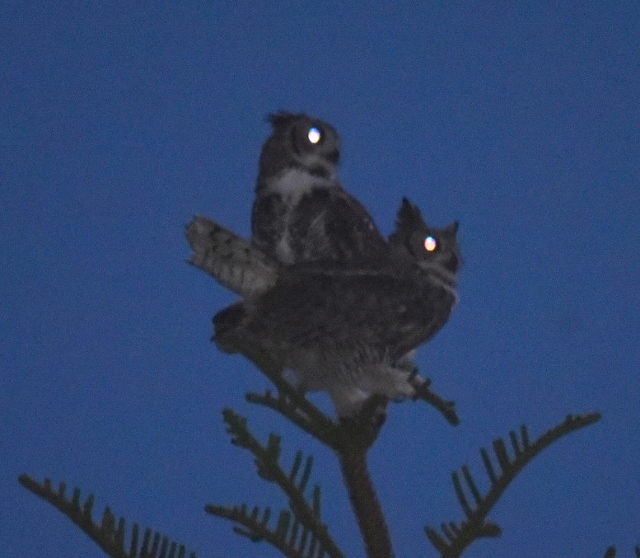
Happy Hallowe’en. Check out what might be lurking around you — in the dark of the night, if you dare.

Your imagery is a treat in this Halloween posting. The entire blog is so entertaining and encourages me to want to get out at night. Love, love this!
Thank you! What a great compliment! Do go out — take someone with you — it’s much less scarier!
Anita, you’ve found your genre. Right here – right now
Alicia Guffey
HA! You might be right! It is fun and intriguing getting out there and scaring yourself, getting the adrenalin pumping!
Wow! You “captured” 2 great horned owls in your yard. What perseverance. Enjoyed learning more about what lurks in the murk.